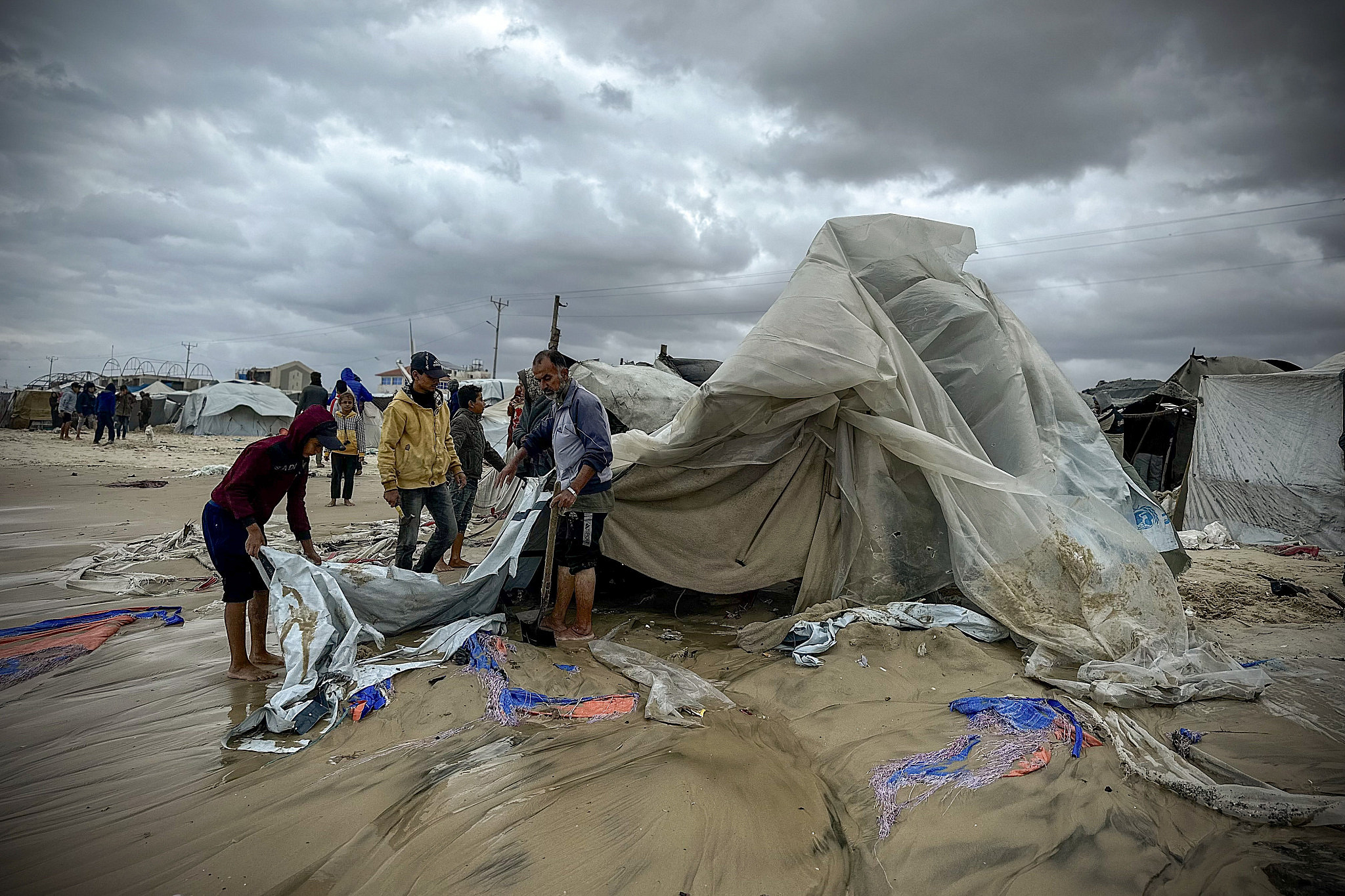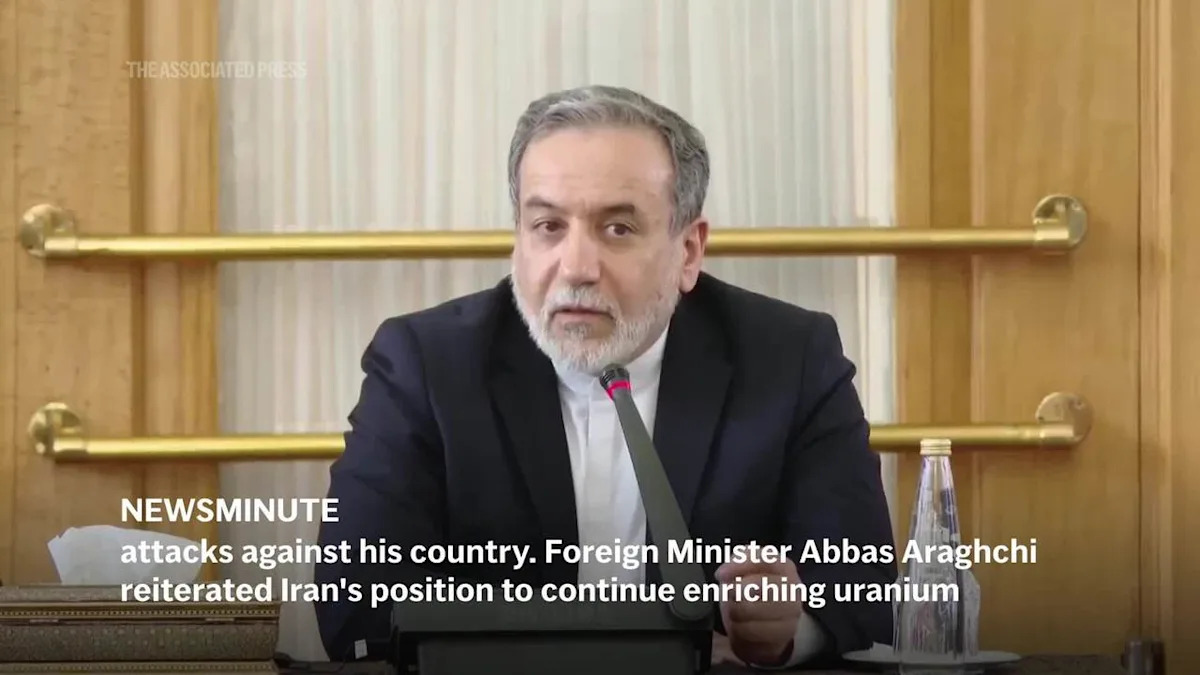Khan Younis Displacement Camp Faces Worsening Humanitarian Crisis Following Devastating Rainstorm
In the wake of a recent intense rainstorm, the already vulnerable Khan Younis displacement camp in the southern Gaza Strip is grappling with a significant escalation of humanitarian challenges. Situated in one of the most densely populated and impoverished regions of the Middle East, the camp is home to thousands of displaced families who have already been enduring the long-term impacts of conflict and instability. The storm has left families exposed to even greater risks, as it has destroyed shelters, worsened sanitation conditions, and exacerbated health crises. This article explores the devastating aftermath of the rainstorm, its impact on the residents of Khan Younis, and the broader implications for the region’s ongoing humanitarian crisis.
The Immediate Aftermath of the Rainstorm
The rainstorm, which struck Khan Younis in early November 2024, unleashed torrential rains and strong winds that caused widespread flooding. Many of the makeshift shelters in the camp, typically constructed from tarps, corrugated metal, and other low-quality materials, were no match for the severe weather conditions. Entire sections of the camp were submerged under water, leaving families without adequate shelter or access to clean water. Roads and pathways were washed out, making it even more difficult for aid organizations to deliver essential supplies like food, clean water, and medical assistance.
Destruction of Shelters
The vulnerability of the camp’s infrastructure became painfully clear as the rainstorm damaged or destroyed over 60% of the shelters. Families who had already been displaced multiple times due to violence and military operations now find themselves facing yet another crisis, with no choice but to rebuild or relocate. For many, this marks the fifth or sixth time they have had to rebuild their homes, a cycle that has exacerbated their trauma.
- Temporary shelters were swept away or severely damaged, leaving families exposed to the elements.
- Flooded living spaces led to the destruction of personal belongings, further compounding the emotional and financial toll.
- The displacement of already displaced people, with no adequate housing solutions in place, has created a dire situation for many.
Flooding and Sanitation Challenges
Beyond the destruction of homes, the rainstorm also created major sanitation problems. Floodwaters have contaminated the limited water sources available to residents, increasing the risk of waterborne diseases. As sewage systems in the camp are inadequate at best, the stagnant water poses a serious health risk. Public health experts have warned of the potential for an outbreak of diseases like cholera, dysentery, and hepatitis, which are common in regions where sanitation is compromised.
Humanitarian Response: A Struggle for Resources
In the aftermath of the storm, humanitarian organizations have been working tirelessly to provide aid, but the situation remains dire. The United Nations Relief and Works Agency for Palestine Refugees (UNRWA), along with local and international NGOs, have mobilized resources to offer emergency relief. However, the limited scope of their efforts is unable to address the full scale of the disaster.
Due to the ongoing blockade of Gaza and the difficulty of navigating the region’s political and military landscape, humanitarian aid has been slow to reach those in need. Even basic supplies like tents, blankets, and clean water have been delayed. Medical teams are stretched thin, and healthcare infrastructure in the area remains woefully underdeveloped, meaning that medical assistance is often delayed or insufficient.
Challenges in Delivering Aid
Several barriers make the effective delivery of aid challenging:
- Access Restrictions: The political situation in Gaza, including restrictions on movement imposed by Israel and Egypt, severely limits the flow of humanitarian assistance.
- Resource Shortages: Organizations on the ground face severe resource constraints, as funding for humanitarian efforts in Gaza has been inconsistent and often insufficient.
- Logistical Issues: The destruction of roads and infrastructure in the wake of the rainstorm makes it harder for aid to reach the most affected areas in a timely manner.
Broader Implications for the Region
The impact of the rainstorm in Khan Younis serves as a stark reminder of the broader, ongoing humanitarian crisis in Gaza. The region has been beset by conflict, political instability, and economic hardship for decades, leaving a population that is highly vulnerable to the effects of natural disasters. The rainy season, which typically runs from October to March, poses an annual risk for many displaced persons, but this year’s storm has exacerbated the situation to unprecedented levels.
Long-Term Impact on Displaced Families
The trauma of displacement is compounded by the environmental hardship caused by the rainstorm. Many residents of Khan Younis have been displaced multiple times, fleeing airstrikes, military operations, and other forms of violence. The destruction of shelters and livelihoods from the storm means that many families are once again left with no recourse but to live in overcrowded conditions, with little hope for recovery.
The long-term psychological effects of constant displacement, combined with the added stress of rebuilding after the storm, may have devastating consequences for the mental well-being of residents. A sense of instability and insecurity permeates everyday life, preventing families from looking ahead with any optimism. The lack of education opportunities, the destruction of medical facilities, and the scarcity of clean water all contribute to a growing sense of hopelessness.
Environmental Degradation in Gaza
The rainstorm also draws attention to the environmental challenges facing Gaza as a whole. Over the years, Gaza’s natural resources have been increasingly depleted due to overpopulation, industrial waste, and the impacts of conflict. The degradation of the environment makes it even more difficult for displaced populations to survive. The region’s already overstretched infrastructure is unable to handle the impacts of such a severe storm, and climate change poses a further threat to its already fragile situation.
The Need for Comprehensive Solutions
While emergency relief efforts are essential, experts agree that a long-term solution to the suffering in Khan Younis and Gaza at large requires a comprehensive approach that addresses both humanitarian needs and the root causes of displacement. Some of the measures that could help mitigate the ongoing crisis include:
- Investment in Infrastructure: Improved housing, sanitation, and healthcare infrastructure are critical for ensuring the long-term safety and well-being of displaced populations.
- Policy Change and International Pressure: A concerted international effort is needed to address the political situation in Gaza and lift restrictions on humanitarian aid.
- Climate Change Adaptation: Initiatives to strengthen resilience to natural disasters, such as the construction of more durable shelters and better water management systems, are vital.
Without sustained international support and a change in the political dynamics of the region, the residents of Khan Younis and other displacement camps in Gaza will continue to face worsening conditions. The international community must recognize the urgent need to address not only the immediate relief efforts but also the long-term stability and resilience of these vulnerable populations.
Conclusion: A Call for Action
The rainstorm that struck Khan Younis has highlighted the extreme vulnerability of displaced populations living in Gaza. It has exposed the limitations of emergency relief efforts in a region marked by instability and conflict. While humanitarian aid provides temporary relief, only long-term solutions addressing the root causes of displacement and improved resilience against natural disasters will truly make a difference in the lives of those affected.
The world cannot afford to overlook the struggles of these families. The plight of those in Khan Younis and other camps must remain a priority for governments, international organizations, and aid groups. As we witness the devastating effects of climate change and continued conflict, it is crucial that the international community works together to provide the support necessary to create a sustainable and peaceful future for Gaza’s displaced populations.
For more information on ongoing humanitarian efforts in Gaza, visit UNRWA. To learn about how you can contribute to the relief efforts, click here.
See more NY Times Report



